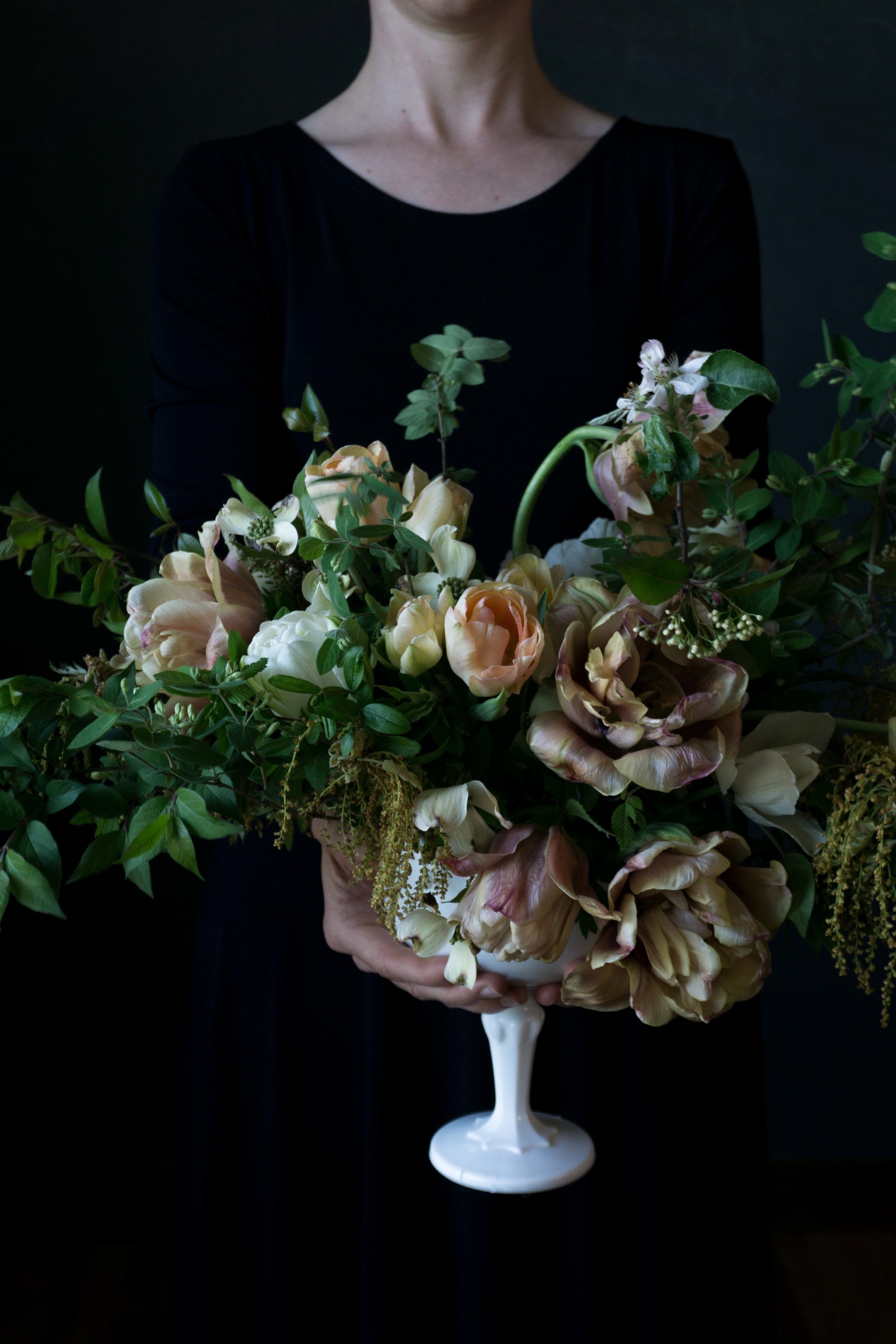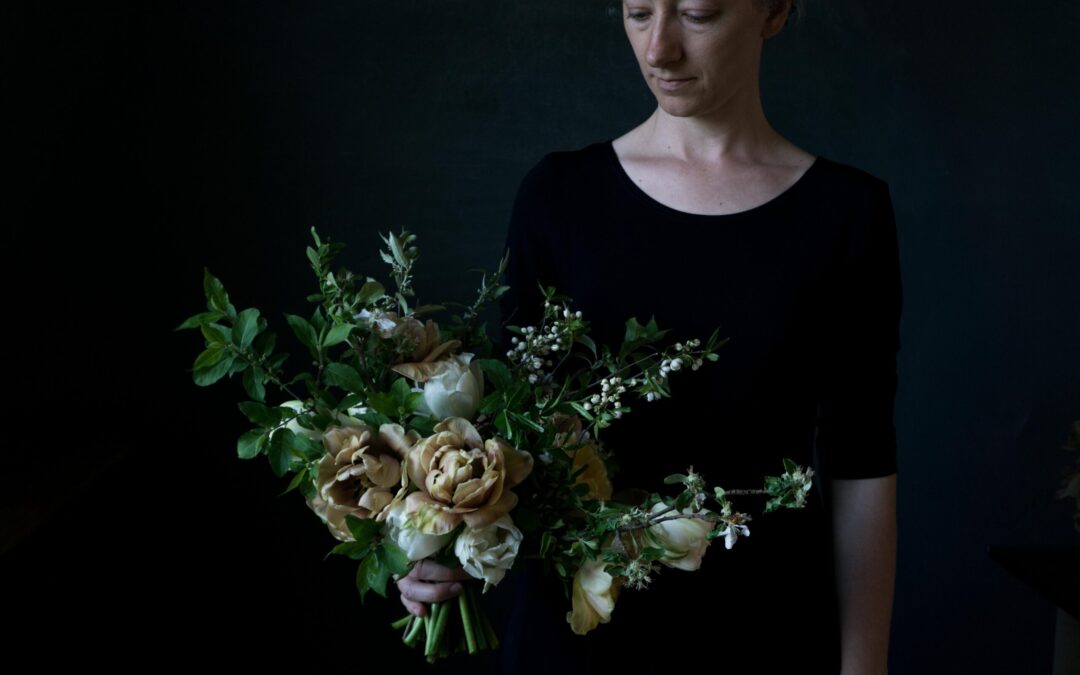Have you heard of the 50 mile bouquet? It’s a term used to describe the local, seasonal flower movement and is the title of a book written by Debra Prinzing on the subject. Because many flowers sold by wholesalers today have an untraceable supply chain (meaning they have traveled hundreds of miles and changed hands many times) there has been a global push back to a simpler, more sustainable way of doing flowers.
The problem with seasonal and local flowers is that sometimes you want more than just zinnias and sunflowers, amiright? Me, too, friend. We are here to say that “seasonal and local” doesn’t mean that you have to sacrifice style. You might just need to go for a small ten-mile forage.

Sunday afternoon we drove a few miles to go see what Spring had got up to in the back country.
Which is really just a fancy way of saying that we parked our car on dusty back roads, put our hazard lights on, and climbed down into gullies for spring greens. It was delightful. We only got a few concerned looks from passing motorists and had to dispatch just one tick. We did hear gunshots at one point, and though we are fairly certain they weren’t intended for us, we didn’t wait around to find out!
When foraging, follow these simple rules:
1. When in doubt, ask for permission. Never forage from someone’s homestead without permission and always follow the golden rule. And definitely heed those “No Trespassing” signs.
2. Leave more than you take. (Take one, leave three.)
3. Know poisonous plants and protected species and leave them be.
Spring Greens
After six months of winter and approximately one day of Spring, the summer-like weather we are having has finally given us LEAFY TREES. (It also blew our tulips open before we could get them harvested, which made us kinda grumpy, but we got over it. It’s hard to stay grumpy when it’s NOT SNOWING.)
Some of the best greens to use in spring are wild honeysuckle, new birch leaves, and baby oak leaves. I’m also partial to flowering branches, and around here there is plenty of wild Elaeaganus (Autumn Olive) to be had. However, spring branches are very tender and may not hold up well out of water, so it is imperative to do an out-of-water test before using in hand bouquets.

Seasonal Flowers
Seriously, friend, the best time to have a seasonal flower plan for your wedding is in May, especially if you live in Ohio. (OK, we will probably say that every month this summer, but we have a thing for May right now, so indulge us.) Between all the dogwood and apple blossoms and lilac, the last of the tulips and the first of the peonies, this month was made for weddings.
The key to gorgeous seasonal bouquets is to hold your ideas loosely. Don’t try to recreate a Pinterest pin, but rather look to nature for your inspiration. Bloom times in May vary wildly from year to year (we are currently about 3 weeks behind last year) so it’s best to keep a pretty chill plan and go with what’s available.
For these bouquets we harvested our late tulips and used those in place of peonies that have not yet started blooming.

Seasonal flowers cost less.
We have learned in our 10+ years as part-time wedding florists that brides are rarely prepared for the cost of flowers, especially the cost of those gorgeous, must-have Pinterest bouquets. We get it. We live with a Dave Ramsey budget, too. But, if there is one thing we’d like to shout from rooftops, it’s that the best way to save costs (especially if you are a DIY bride) is to use seasonal flowers and foliage you’ve gathered yourself.
Hire a florist for your bridal bouquets, giving them the freedom to incorporate what is fresh and in season. Then do the rest of the floral arrangements yourself with things you’ve foraged. I’d be willing to guarantee you’ll spend well under the national average of $2,500 on wedding flowers. Quite willing.

These bouquets cost us one jolly Sunday afternoon of foraging, several dollars worth of tulip bulbs, and a little bit of florist tape. That’s it.

A side note: Because they are providing you a service and there is extensive time involved in foraging, foraged goods from a florist will not be free. If you want free or really cheap flowers you’ll have to go the DIY route.
But the DIY life ain’t bad. No indeed.
-LaRonda



Mother’s Day is this weekend. A perfect time for me to read this post! 🙂 Thank you for the inspiration.
Did you end up making a flower arrangement for her? We’d love to see it!